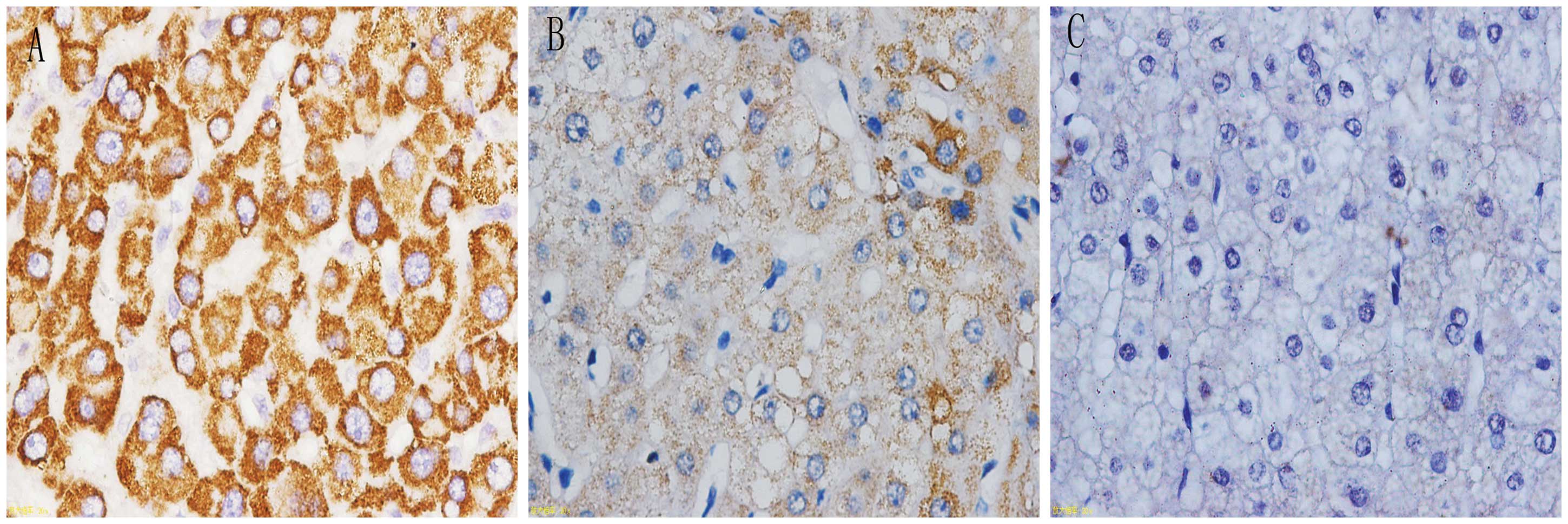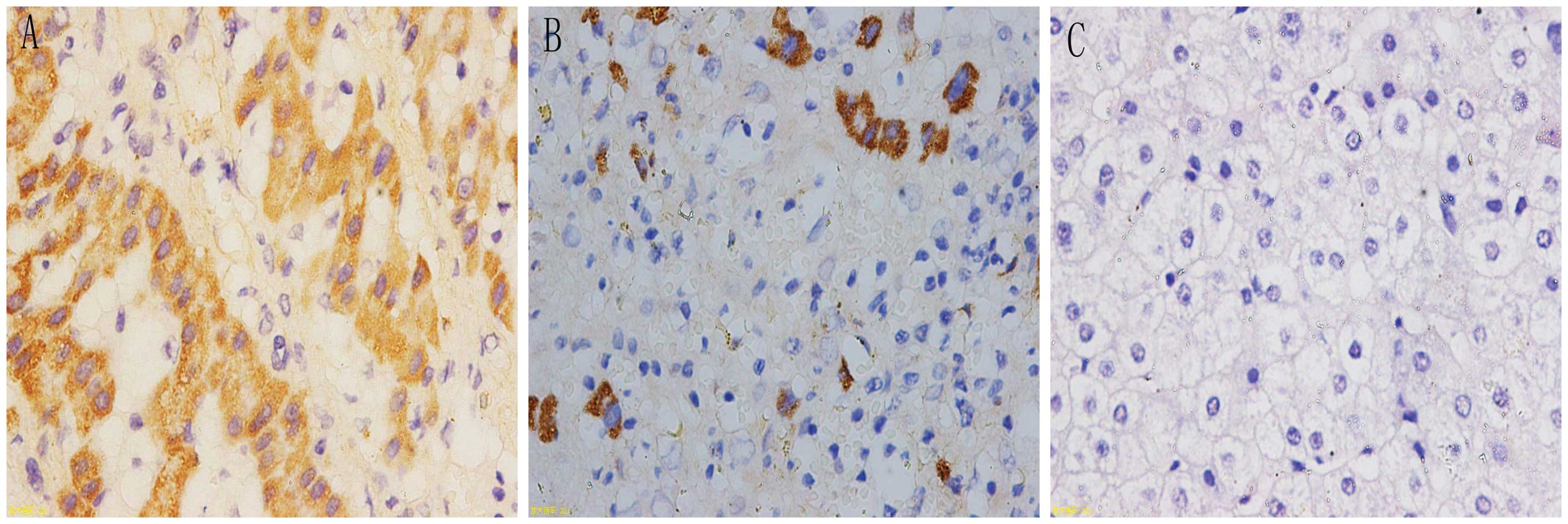|
1
|
Stetler-Stevenson WG, Aznavoorian S and
Liotta LA: Tumor cell interactions with the extracellular matrix
during invasion and metastasis. Annu Rev Cell Biol. 9:541–573.
1993. View Article : Google Scholar : PubMed/NCBI
|
|
2
|
Scaltriti M and Baselga J: The epidermal
growth factor receptor pathway: a model for targeted therapy. Clin
Cancer Res. 12:5268–5272. 2006. View Article : Google Scholar : PubMed/NCBI
|
|
3
|
Liu D, Aguirre Ghiso J, Estrada Y and
Ossowski L: EGFR is a transducer of the urokinase receptor
initiated signal that is required for in vivo growth of a human
carcinoma. Cancer Cell. 1:445–457. 2002. View Article : Google Scholar : PubMed/NCBI
|
|
4
|
Piironen T, Laursen B, Pass J, et al:
Specific immunoassays for detection of intact and cleaved forms of
the urokinase receptor. Clin Chem. 50:2059–2068. 2004. View Article : Google Scholar : PubMed/NCBI
|
|
5
|
Zhou Y, Lu X, Li S and Zhan L: Correlation
between the overexpression of urokinase receptor isoform uPAR
(D1D2) and hepatic cell malignant transformation. Mol Med Rep.
9:1689–1696. 2014.PubMed/NCBI
|
|
6
|
Hsu SL, Chenga CC, Shi YR and Chiang CW:
Proteolysis of integrin α5 and β1 subunits involved in retinoic
acid-induced apoptosis in human hepatoma Hep3B cells. Cancer Lett.
167:193–204. 2001.
|
|
7
|
Barillari G, Albonici L, Incerpi S, et al:
Inflammatory cytokines stimulate vascular smooth muscle cells
locomotion and growth by enhancing α5β1 integrin expression and
function. Atherosclerosis. 154:377–385. 2001.PubMed/NCBI
|
|
8
|
Bezdenezhnykh N, Semesiuk N, Lykhova O, et
al: Impact of stromal cell components of tumor microenvironment on
epithelial-mesenchymal transition in breast cancer cells. Exp
Oncol. 36:72–78. 2014.PubMed/NCBI
|
|
9
|
Kita Y, Fukagawa T, Mimori K, et al:
Expression of uPAR mRNA in peripheral blood is a favourite marker
for metastasis in gastric cancer cases. Br J Cancer. 100:153–159.
2009. View Article : Google Scholar : PubMed/NCBI
|
|
10
|
Dang J, Wang Y and Doe WF: Sodium butyrate
inhibits expression of urokinase and its receptor mRNAs at both
transcription and post-transcription levels in colon cancer cells.
FEBS Lett. 359:147–150. 1995. View Article : Google Scholar : PubMed/NCBI
|
|
11
|
Montuori N, Mattiello N, Mancini A, et al:
Urokinase-mediated posttranscriptional regulation of
urokinase-receptor expression in non small cell lung carcinoma. Int
J Cancer. 105:353–360. 2003. View Article : Google Scholar : PubMed/NCBI
|
|
12
|
Groenendijk FH, Zwart W, Floore A, Akbari
S and Bernards R: Estrogen receptor splice variants as a potential
source of false-positive estrogen receptor status in breast cancer
diagnostics. Breast Cancer Res Treat. 140:475–484. 2013.
|
|
13
|
Tian T, Shu Y, Chen J, et al: A functional
genetic variant in microRNA-196a2 is associated with increased
susceptibility of lung cancer in Chinese. Cancer Epidem Biomarkers
Prev. 18:1183–1187. 2009. View Article : Google Scholar : PubMed/NCBI
|
|
14
|
Grismayer B, Sato S, Kopitz C, et al:
Overexpression of the urokinase receptor splice variant uPAR-del4/5
in breast cancer cells affects cell adhesion and invasion in a
dose-dependent manner and modulates transcription of
tumor-associated genes. Biol Chem. 393:1449–1455. 2012. View Article : Google Scholar
|
|
15
|
Sato S, Kopitz C, Grismayer B, et al:
Overexpression of the urokinase receptor mRNA splice variant
uPAR-del4/5 affects tumor-associated processes of breast cancer
cells in vitro and in vivo. Breast Cancer Res Treat. 127:649–657.
2011. View Article : Google Scholar
|
|
16
|
Almasi CE, Drivsholm L, Pappot H,
Høyer-Hansen G and Christensen IJ: The liberated domain I of
urokinase plasminogen activator receptor - a new tumour marker in
small cell lung cancer. APMIS. 121:189–196. 2013. View Article : Google Scholar : PubMed/NCBI
|
|
17
|
Parise LV, Lee J and Juliano RL: New
aspects of integrin signaling in cancer. Semin Cancer Biol.
10:407–414. 2000. View Article : Google Scholar : PubMed/NCBI
|
|
18
|
Yao M, Zhou XD, Zha XL, et al: Expression
of the integrin α5 subunit and its mediated cell adhesion in
hepatocellular carcinoma. J Cancer Res Clin Oncol. 123:435–440.
1997.
|
|
19
|
Korah R, Boots M and Wieder R: Integrin
α5β1 promotes survival of growth-arrested breast cancer cells: an
in vitro paradigm for breast cancer dormancy in bone marrow. Cancer
Res. 64:4514–4522. 2004.
|
|
20
|
Jayne DG, Heath RM, Dewhurst O, Scott N
and Guillou PJ: Extracellular matrix proteins and
chemoradiotherapy: α5β1 integrin as a predictive marker in rectal
cancer. Eur J Surg Oncol. 28:30–36. 2002.
|
|
21
|
Su Q, Schröder CH, Hofmann WJ, et al:
Expression of hepatitis B virus X protein in HBV-infected human
livers and hepatocellular carcinomas. Hepatology. 27:1109–1120.
1998. View Article : Google Scholar : PubMed/NCBI
|
|
22
|
Ossowski L and Aguirre-Ghiso JA: Urokinase
receptor and integrin partnership: coordination of signaling for
cell adhesion, migration and growth. Curr Opin Cell Biol.
12:613–620. 2000. View Article : Google Scholar : PubMed/NCBI
|
|
23
|
Aguirre Ghiso JA, Kovalski K and Ossowski
L: Tumor dormancy induced by downregulation of urokinase receptor
in human carcinoma involves integrin and MAPK signaling. J Cell
Biol. 147:89–104. 1999.PubMed/NCBI
|
|
24
|
Wei Y, Tang CH, Kim Y, et al: Urokinase
receptors are required for α5β1 integrin-mediated signaling in
tumor cells. J Biol Chem. 282:3929–3939. 2007.
|












